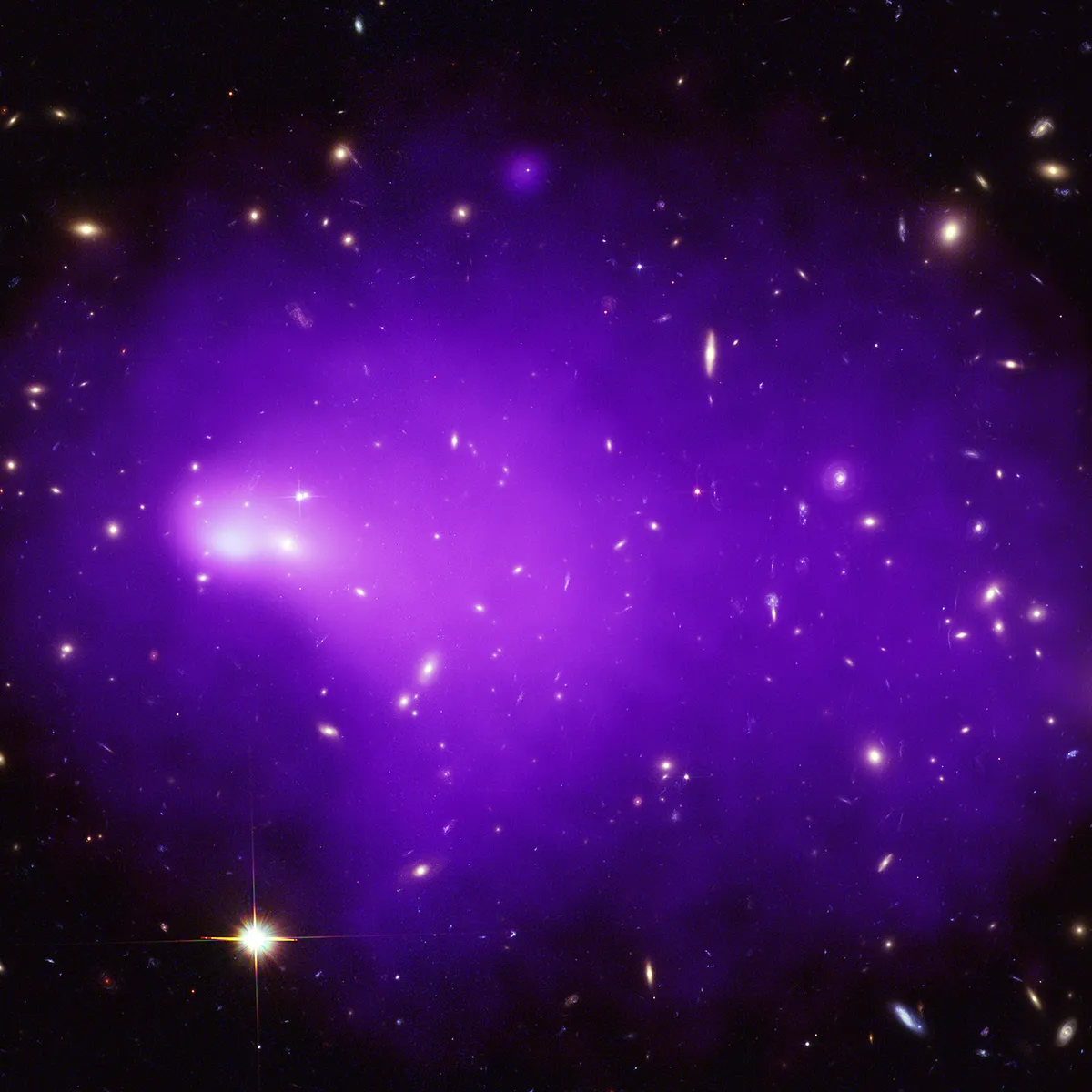Put simply, the Hercules-Corona Borealis Great Wall is the largest structure we know about anywhere in the Universe.
It’s a galaxy filament – a string of galaxy groups and clusters – that measures an incredible 10 billion lightyears across.
Let’s put that into context.

How big is the Hercules-Corona Borealis Great Wall?
The wall is much bigger than the supermassive black holes at the centres of galaxies.
It's bigger than galaxies themselves, even galaxy clusters, even the Virgo Supercluster, and completely dwarfs the CfA2 Great Wall of Galaxies.

Let's think about it in terms of lightyears.
A photon of light leaving the Sun takes around eight minutes and 20 seconds to reach Earth.
Give that photon 2,537,000 (2.537 million) years to travel, and it would get as far as the Andromeda Galaxy.
But if a photon of light wanted to make its way from one end of the Hercules-Corona Borealis Great Wall to the other, that journey would take 10 billion years: that's nearly as old as the Universe itself.
It is, in short, absolutely, unbelievably huge, and until very recently we had no idea it was there.
Gamma ray bursts and the Great Wall's discovery

Its presence was first detected in 2013 by a group of astronomers studying the distribution of gamma-ray bursts across the Universe.
They spotted a distinct cluster of gamma-ray bursts in one particular region of the sky.
The region that lies the direction of the constellations of Hercules and Corona-Borealis, to be precise.
Since gamma-ray bursts – very bright flashes thought to result from supernova explosions – require huge amounts of mass and energy to occur in the first place, mapping their distribution at the macro scale gives us a pretty good idea of the distribution of mass in the Universe.
Hence, the team in question – led by István Horváth, Jon Hakkila and Zsolt Bagoly – were able to deduce the presence of the Hercules-Corona Borealis Great Wall.

Location and shape of the Hercules-Corona Borealis Great Wall
The newly-discovered structure soon acquired a name, but it’s actually something of a misnomer.
For one thing, while it does indeed lie in the direction of the constellations of Hercules and Corona-Borealis, it’s larger then either of them, also spanning the constellations of Lyra, Boötes and Draco.
Furthermore, it’s believed to be round-ish in shape, which means we’d more normally refer to it as a supercluster.
Galaxy 'walls', in contrast, usually have a flatter, more elongated shape.
But ‘Hercules-Corona Borealis Great Wall’ was the name given to the new structure by a Filipino teenager online, and the name that eventually stuck.

Controversy
It should be noted, however, that not all astronomers agree that the wall exists.
In particular, a paper published by astronomer Sam Christian in the July 2020 edition of the journal Monthly Notices of the Royal Astronomical Society argued that the perceived irregularities in the distribution of GRBs could be due to statistical or experimental error.
Others have pointed to various putative constraints that they believe impose an upper limit on the physical size of cosmic objects: the Hercules-Corona Borealis Great Wall, they argue, is just too big to exist.
Further research is, therefore, required.
That research may disprove its existence, or may turn up ever larger structures.
But for now, in the eyes of most astronomers, the Hercules-Corona Borealis Great Wall is the biggest thing in the Universe.

